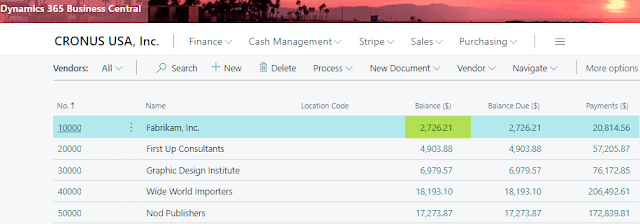Automating Deferred Revenue in Business Central Using Recurring Sales Lines
If you're billing customers monthly or annually for subscriptions or services, and posting those invoices to a deferred revenue account, you know how quickly the manual steps can add up. I'm always looking for ways to streamline repetitive tasks inside Business Central and this is a great example of where a little setup can go a long way.
The Scenario
Business Central user asked:
"We’re using Recurring Sales Lines to streamline invoicing. Is there a way to add a deferral code so that amortization of deferred revenue happens automatically?"
Great question and the answer is yes.
How It Works
I tested this in Business Central and it worked as expected. Here's how to set it up:
✅ Step 1: Set the Default Deferral Template on the G/L Account
Head over to your Chart of Accounts and find the revenue account you’re using for deferred income. On the G/L account card, there’s a field called Default Deferral Template, populate that with the appropriate template for your revenue recognition schedule.
Once that’s in place, any time this account is used on a sales line (including via Recurring Sales Lines), it will automatically bring in the deferral code.
✅ Step 2: Add Recurring Sales Lines to the Customer Card
If you haven’t already, create your recurring sales lines for each customer. When you generate a sales invoice from the Recurring Sales Lines, it will:
- Pull in the correct G/L Account
- Automatically assign the Deferral Code based on the G/L Account’s default
- Post the deferral entries upon posting the invoice
Simple and effective.
Things to Keep in Mind
As with most things in Business Central, there are a few nuances worth mentioning:
- Different Customers, Different Schedules. If your customers have varying recognition periods (e.g., 6 months vs. 12 months), you may need to:
- Create different revenue accounts with different deferral templates, or
- Manually override the Deferral Code on the invoice line after the recurring line pulls in.
- Posting Date Matters. The deferral schedule uses the Posting Date of the invoice as the start date. Make sure that posting date lines up with when you want to begin revenue recognition.
- You Can Preview the Schedule. Before posting the invoice, click into the Deferral Schedule on the line to preview how the revenue will be recognized across periods. It’s a great double-check.
- Template Settings Drive the Logic. Take a second look at your Deferral Template setup:
- Start Date Type (exact date vs. beginning of period)
- Number of Periods
- Allocation Method (equal amounts, equal per period, etc.)
These settings will determine how the revenue is recognized, so they need to match your business model. - Reporting Considerations. The revenue won’t hit your income statement until it’s recognized. Make sure your team understands how to report on both Deferred and Recognized revenue especially if you're using Power BI, Jet Reports, or custom Excel tools.
- Reversals Will Reverse Deferrals Too. If you void or credit a posted invoice that had deferrals, the system will also reverse the deferral entries. Just be aware of that when making corrections.
- Watch Out for Journal Entries. If you hit the same revenue account from a General Journal, the deferral code will still auto-populate. If you don’t want to defer the revenue in that case, you’ll need to manually clear out the field.
Final Thoughts
This is one of those simple automations in Business Central that can save you a ton of time and manual work especially if you’re billing clients on a recurring basis and need to manage deferred revenue. Once it’s set up, you can create the invoice and handle the deferral in one click.
------
Kristen Hosman is a Microsoft MVP in Denver. She works with Dynamics 365 Business Central and related technologies. You can also connect with her through this link: Kristen Hosman | Linktree






Comments